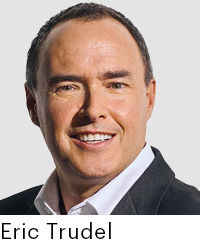
Beneva is now offering a group insurance clause to support plan members who are undergoing a gender transition, Eric Trudel, the insurer’s Executive Vice President and Group Insurance Lead, told Insurance Portal in an exclusive interview
Plan sponsors can add the clause to their group health insurance coverage. It covers, among other costs, gender-affirming surgery that is not paid for by the public plan in the insured’s province or territory of residence.
Beneva is following in the footsteps of Sun Life, one of the first insurers to announce an initiative of this kind in 2019. Medavie Blue Cross and Green Shield Canada got onboard in 2021. Eric Trudel explains that the new benefit is consistent with Beneva’s core values of diversity and inclusion.
Growing demand
Insured groups are increasingly clamouring for this coverage, Trudel adds. “All companies are currently developing an inclusion and diversity policy. They are reviewing their human resources practices,” he told Insurance Portal.
The new clause stems from a request from a large group of Beneva policyholders in Ontario. “In the end, this group did not add our clause to their group insurance plan. But one of our larger groups added it to theirs on April 1, 2022,” he points out, describing the group as a Quebec-based group in the public health sector with 100,000 members.
Diagnosis required
The cost of surgery to change sexual characteristics to match the gender with which the insured self identifies is eligible for Beneva insurance coverage. The cost of electrolysis or laser hair removal is also eligible.
Beneva does set one condition for entry: The person must have been diagnosed with gender dysphoria. Such individuals feel discomfort or stress because their gender identity differs from the sex assigned at birth.
In addition, the surgery or hair removal must be performed in Canada and not be covered by the health insurance plan of the insured’s province of residence. “The new benefit will reimburse expenses that exceed what is generally covered by provincial health insurance plans,” Trudel explains.
There are many disparities between provinces, as illustrated in an internal chart dated fall 2021 that Trudel shared. For example, chest contouring or masculinization and hair removal, including laser hair removal, are covered by Quebec’s public plan, but not by Ontario’s. In contrast, the Ontario plan covers breast augmentation, unlike the Quebec plan.
Choice of coverage
Sponsors can choose one of two coverage maximums: A lifetime maximum and an annual maximum. The lifetime maximum is standard, Trudel explains. It allows the policy sponsor to choose, in $10,000 increments, the amount of coverage it wishes to provide to employees. The maximum is $50,000 per insured.
The annual maximum is optional. Under this option, sponsors can select an annual maximum of $5,000 or $10,000 per insured.
Trudel expects plan members to focus on the lifetime benefit, and cap it at $10,000 or $20,000. This is an economical choice, he says. “A $50,000 lifetime benefit may cost 3.5 times as much,” he points out.
Offer to groups of 500 and more
For now, the insurer is limiting this clause to groups of 500 or more employees. "If the product is well received by the market, we aim to extend it to smaller groups as well,” Trudel says.
Beneva also hopes to leverage the experience it gains from its group of 100,000 policyholders. Trudel explains that the insurer has priced the gender transition support clause according to assumptions. "We based the pricing on theoretical statistics. We are lucky that we can test these assumptions with a large group. Once we have more statistics, we plan to expand our offering."
Supporting statistics
Eric Trudel cites Statistics Canada data that Beneva used as a basis for pricing the new clause. The government agency finds that 0.15 per cent of the Canadian population identifies as transgender.
He explains that Beneva’s group underwriting team integrated other factors into the underwriting process: The cost that varies by surgery covered; provincial coverage data; and the staggering of utilization over time. In fact, the affirmation process can take a few years, Trudel notes.
Inexpensive
After factoring in all the assumptions, Trudel estimates the clause’s price. “For the $10,000 lifetime maximum, the average cost would be $5 per year, or $0.42 per month," he says. That is 0.25 per cent of the cost of a full group insurance plan. The price of the clause is that of an average comprehensive group insurance plan, which has an average annual premium of $2,000 per year, or $167 per month.
When the cost of the clause is expressed on the health insurance portion of the plan only, “then we’re talking about 0.50 per cent of the health insurance premiums,” Eric Trudel adds. He points out that the health insurance portion of an average comprehensive plan costs about $1,000 in annual premiums, out of a total premium of $2,000. The other portion of the premiums goes to benefits such as life insurance and long-term disability insurance.







